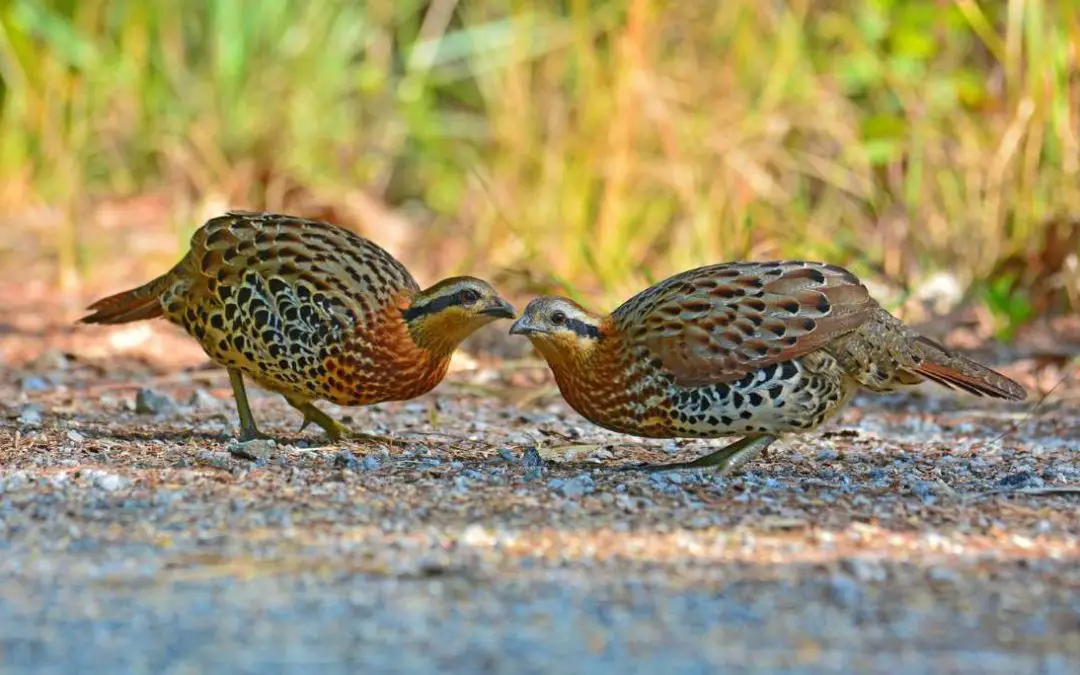Ask a person what animal eats bamboo, and you’ll get the same answer 99.9% of the time. Of course, it’s the Giant Panda. Or maybe ask the one person in 1,000 who’s been to Volcanoes National Park in Rwanda, and they’ll mention the endangered Mountain Gorilla. Far too often overlooked, in the underbrush of China and Southeast Asia, are the flourishing bamboo partridges, of the genus Bambusicola.
Bamboo partridges are small Asian birds of the pheasant family (Phasianidae). They include just three species in the genus Bambusicola, namely the Chinese bamboo partridge, the Taiwan bamboo partridge, and the Mountain bamboo partridge of Southeast Asia. The birds primarily eat bamboo, insects and seeds. They have a healthy population in the wild, and are also eaten or kept as pets.
This is part of an ongoing series about bamboo and wildlife. Bamboo is a vital component in a wide variety of ecosystems around the world. Many species of animal depend on bamboo for food or shelter, or else have earned some kind of bamboo nickname for other reasons. To learn more, check out some of these interesting articles.
- Panda bears, bamboo and other endangered species
- Exotic Wildlife: Bamboo sharks
- The Golden Bamboo Monkey
- Bamboo and reforestation
Species of bamboo partridges
The three species of bamboo partridge are Bambusicola thoracicus (Chinese bamboo partridge), Bambusicola sonorivox (Taiwan bamboo partridge), and Bambusicola fytchii (Mountain bamboo partridge). The three species are similar in most respects, in behavior and appearance. The main difference, as indicated by their common names, has to do with where they live. As the name indicates, they do eat bamboo. However, they are genetically closer to junglefowl than to true partridges.
Characteristics of the bamboo partridge
Belonging to the pheasant family, Phasianidae, bamboo partridges are closely related to chickens, turkeys, Old World quails and most game birds. They are relatively small, weighing about 4 to 8 ounces each. Like most birds of the Galliform bird family, these partridges rarely fly. Instead, their preferred method of defense is just to hide. But they do have well developed wings and feathers, making them quite capable of flight, when necessary. Generally they only fly to escape a predator, but sometimes they’ll take a gentle cruise from the lower canopy down to the forest floor.
Their plumage is a speckled mix of creams, browns, grays and black. We can recognize the Mountain bamboo partridge by the black and white stripes around its eyes. The Chinese and Taiwan varieties are almost identical, and previously thought to be the same species.
Range and distribution of the bamboo partridge
The three species of bamboo partridge live in different parts of Asia, but in very similar habitats. These small and generally flightless birds mostly dwell in grassland, scrub forest, and other degraded forest where bamboo is present. They spend most of the day hidden under the brush, only coming out in the early morning and early evening to hunt and forage. So it’s not easy to spot them in the wild. But they have a loud call, which they will repeat several times, and this is the easiest way to locate them.
The Chinese bamboo partridge lives mostly in eastern mainland China, while the Taiwan species is endemic to Taiwan. The Mountain bamboo partridge has by far the widest distribution, all around the lower Himalayas, from India to Tibet, across Myanmar, Bangladesh and Vietnam.
In addition to having a healthy population in the wild, many of these birds are also kept as pets. Like their cousins, the chickens and quails, bamboo partridges can also make a tasty meal. Many people in Asia hunt or raise them for food, eating them like other poultry.
The bamboo partridge’s diet
As the little bird’s name would suggest, bamboo makes up a significant portion of the bamboo partridge’s diet. But unlike the Giant Panda or the Mountain Gorilla, the partridge eats plenty of other things as well. While those other bamboo lovers live almost entirely on bamboo, the partridges also eat lots of worms and insects, as well as variety of seeds and berries. And like other bamboo foragers, they prefer to eat the tender, young shoots and the fresh, young foliage.
Naturally curious?
Are you fascinated by nature, wildlife and all things bamboo, and curious to learn more? Then check out some of our other educational and entertaining articles.

























